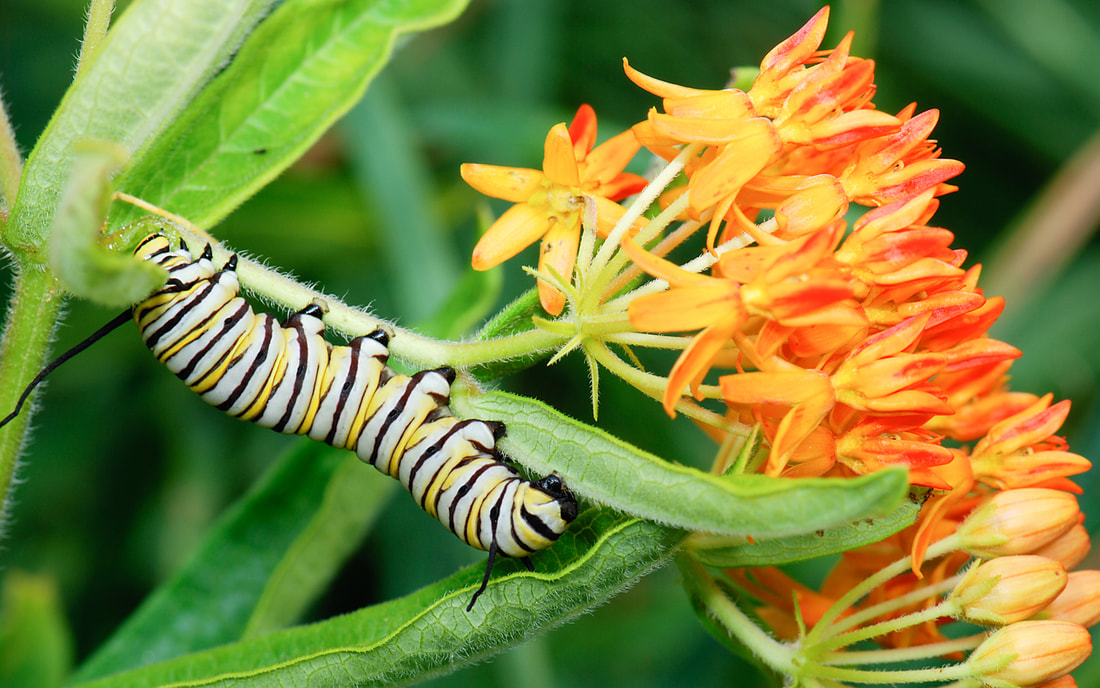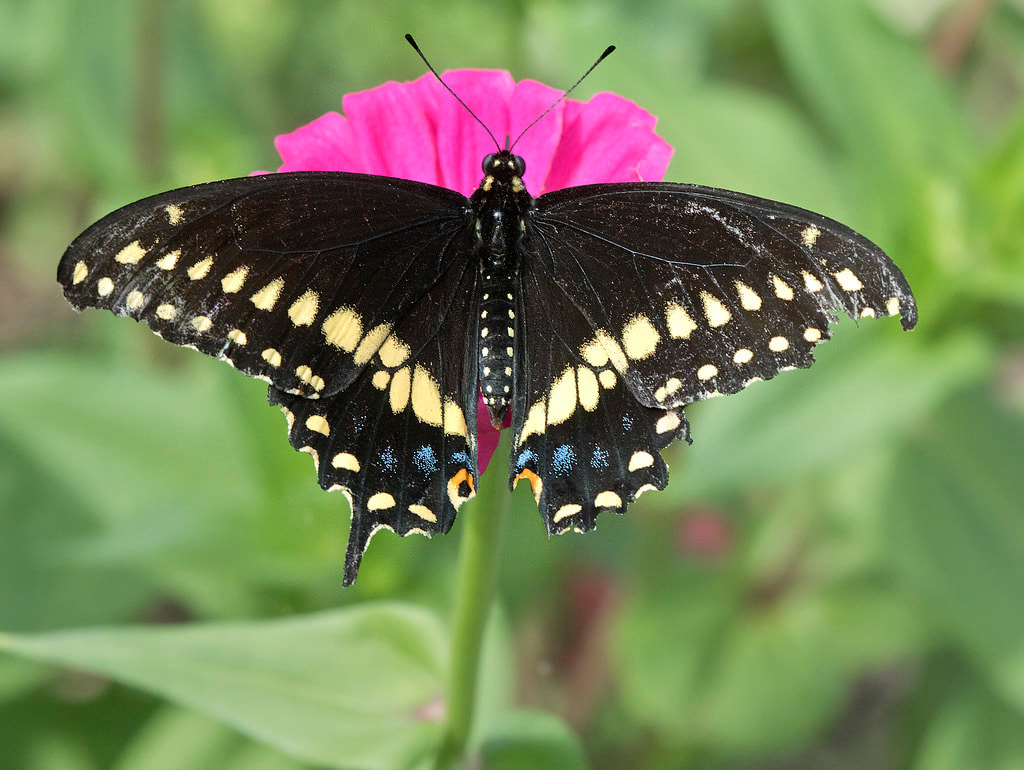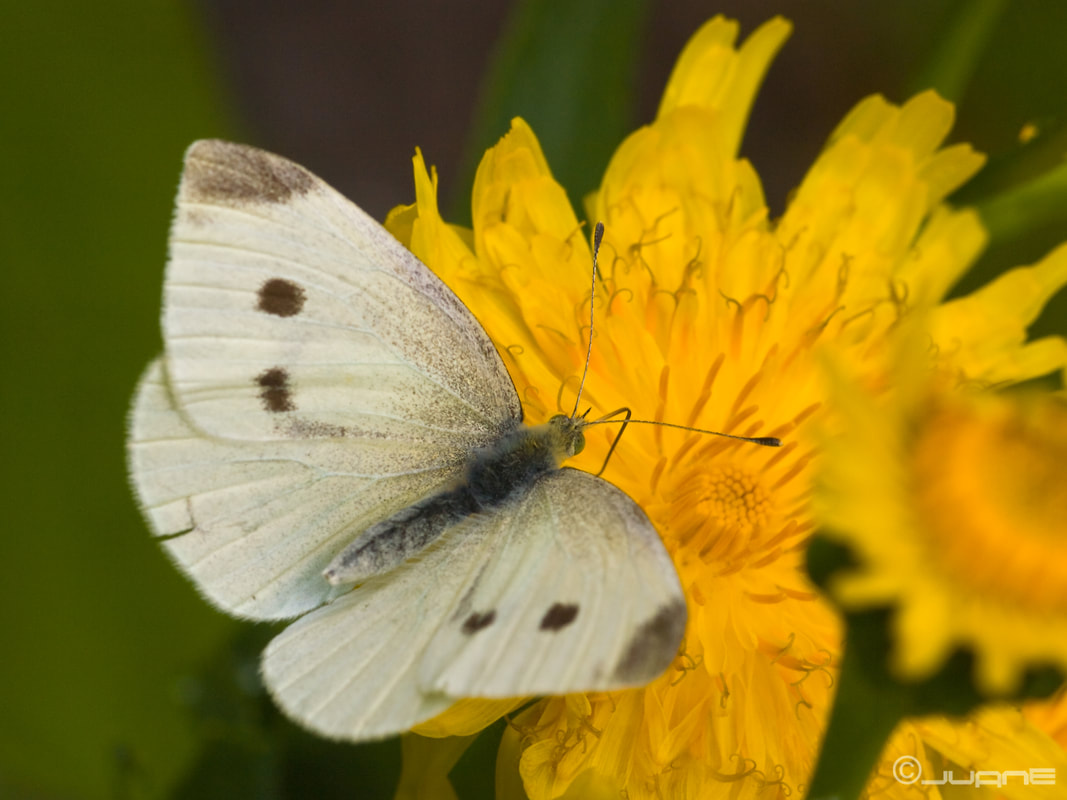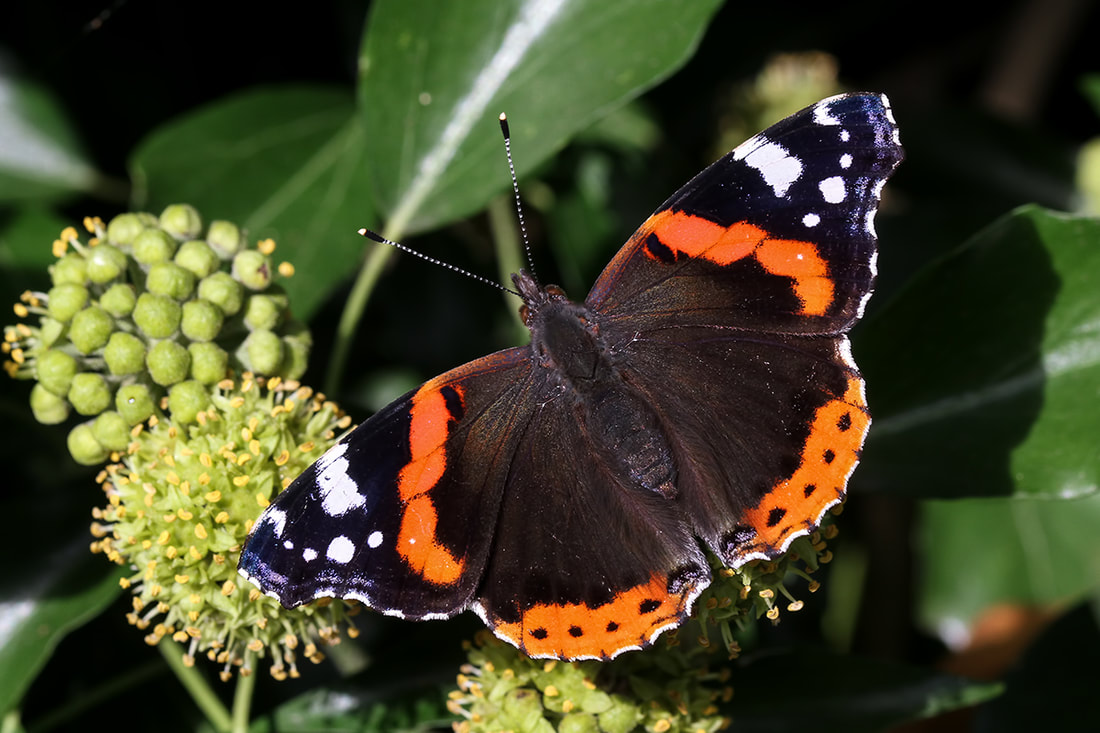Why is it important to learn how to identify butterflies? Learning some of the most common butterflies in your area will help you to understand what kinds of butterflies you are attracting to your yard. If your goal is to help endangered species, this is a great place to start! In the United States and Canada, there are more than 750 species of butterflies! Much of their habitats are being lost on a daily basis due to human activity (agriculture, roads, insecticides, herbicides etc.) However, you can help them by building habitat in your own backyard! Click here to learn more about endangered species of butterflies. 10 Butterflies That You May Have Seen Before
Monarch- Danaus plexippusHow to Identify: The monarch butterfly is one of the most iconic species of butterflies although it is sometimes confused with it’s lookalike butterfly, the Viceroy. The upper side of the male is bright orange with wide black borders and black veins. The upper side of the female is more of an orange-brown with wider black borders than the male. The Viceroy butterfly mimics the Monarch in order to deceive predators. The main physical difference between the monarch and the viceroy is the black line drawn across the viceroy's hind wings, which monarch butterflies do not have. Viceroy butterflies are also significantly smaller than Monarchs. Click here to read a blog about the relationship between viceroy and monarch butterflies. Where are they found? The monarch is found in a variety of habitats including fields, meadows, weedy areas, marshes, and roadsides. They also complete an annual southward migration from the northern and central United States and southern Canada to Florida and Mexico What plants do they like? Host and Nectar plant: Monarchs cannot survive without milkweed. Monarch caterpillars only eat milkweed plants (Asclepias spp.), and they also only lay their eggs on Milkweed. Due to the loss of habitat and the disappearance of milkweed, Monarchs populations are decreasing drastically. Not sure where to find milkweed? The Xerxes Society has created a handy database where you can search your state and it will list where you can find native milkweed nearest you. You can also buy milkweed seed here and grow it yourself at home! Regal FritillaryHow to Identify: The regal fritillary is a large butterfly that is smaller in size to the monarch butterfly. The upper side of the forewing is bright red-orange with black markings. The upper side of the hindwing is black with a row of white spots and on the wing edge is a row of spots that are orange in males and white in females. Where are they found? The regal fritillary is found on the Great Plains and is associated with tallgrass prairies, meadows and pastures. What plants do they like? The larvae feed on violets. The adults feed on a variety of flowers such as milkweeds, thistles, clover and purple coneflower. There is an urgent call to track Regal Fritillary butterflies. The Wildlife Conservation Fund created a citizen science project to monitor regal fritillaries, as well as monarchs, which are similar in appearance. Eastern Tiger Swallowtails- Papilio glaucus How to identify: They are quite large with bright yellow and black stripes. Male tiger swallowtails have some orange and blue spots near their tail. Females have both a light and dark form. The light form looks a bit like the male but with more blue on their hind wings. The dark form still has the blue spots, but doesn’t have any yellow. Where are they found? The eastern tiger swallowtail can be found in a variety of habitats, especially near water, but also in meadows, gardens, parks and roadsides. It is native to the Eastern United States. What plants do they like? Host plant: They only lay eggs on plants from the Magnolia and Rose plant families. Nectar plant: They drink nectar from flowers such as milkweed, thistles, honeysuckle, ironweed and red clover. Black Swallowtail- Papilio polyxenes How to identify: The upper surface of the wings is black with two rows of orange-yellow spots. There is a row of blue spots between the rows of orange/yellow spots on the hind wings. There is a conspicuous red spot on the inner edge of the hind wings. Where are they found? Throughout much of North America in meadows, urban gardens, and roadsides. What plants do they like? Nectar plants: They especially like to feed on Milkweed, Phlox, Red clover and Thistle. Host plants: They will lay their eggs on plants of the Carrot family such as carrots, parsley, dill, fennel, Queen Anne’s Lace and rue. Cabbage White- Pieris rapae How to identify: The cabbage white butterfly is white with charcoal gray tips on the wings. Males have a single black spot on the center of each forewing while females have two spots in the same place. The color under the forewings may be yellow or light green. Where are they found? They are well adapted to urban areas but can also be found in fields, meadows, parks and gardens from early spring to late fall. It has been introducted to the US from Europe and is found North Africa, Asia, South America and Great Britain as well. What plants do they like? The caterpillar can be found feeding on the leaves of cabbage and other cruciferous vegetables such as broccoli and cauliflower. Orange Sulphur or Alfalfa Butterfly -Colias eurytheme How to identify: The orange sulfur is identified by a small dark mark on the upper forewing, which is rounded into an oblong dot.Both sexes have a dark border; there are pale spots within the border on females. Where are they found? They occur in fields, along roads and in residential gardens. They are found throughout North America except for central and southeastern United States. They are also seen in Mexico and Canada. What plants do they like? Host plants: Larvae feed on legumes, especially alfalfa, white clover and white sweet clover. Nectar plants: Adults are attracted to many flower species. Spring Azure- Celastrina ladonHow to identify: They are very small (under 1”) in different shades of a light violet blue. Form "violacea" has scattered dark spots. Form "marginata" has a dark gray-brown border on HW. Form "lucia" has a prominent dark splotch in the middle of the HW as well as dark borders on both wings. Where are they found? They inhabit woodland edges and openings, and readily visit garden flowers throughout the United States except for coastal regions of Texas and Florida. What plants do they like? Host plants: They primarily like buds of Flowering Dogwood, blueberries, and viburnums. Nectar plants: They like a large variety of nectar-rich flowers. Mourning Cloak- Nymphalis antiopaHow to identify: The mourning cloak is a large and easy to identify because it doesn’t have any look-a-likes. They are dark brown/maroon with thickly banded cream-colored edges. They also have bright blue spots along the edges and black-brown spotted underwings. Where are they found? Mourning cloaks can be found in open woods, parks, gardens, and along the edges of streams, lakes and ponds throughout North America. What plants do they like? Nectar plants: Adults drink nectar from plants, such as milkweed and red maple, rotting fruit and tree sap. Host plants: The caterpillars will feed on willow species, American elms, hackberry trees, hawthorne, wild rose, birch and poplar trees. Painted Lady- Vanessa cardui How to identify: The Painted Lady butterfly in orange and brown in color with mottled brown spot and 4 large eyespots. Where is it found? They are the most common butterfly in the world and found throughout the world except in Antarctica, Australia and South America. What plants do they like? Host plants: thistle, mallows, hollyhock, legumes, others. Nectar plants: They can feed on over 300 species of plants although their favorites are from the Aster family. Red Admiral- Vanessa atalantaHow to identify: The Red Admiral Butterfly is a medium-sized butterfly with black wings, orange bands, and white spots. Where is it found? The red admiral is widely distributed across temperate regions of North Africa, the Americas, Europe, Asia, and the Caribbean. It resides in warmer areas, but migrates north in spring and sometimes again in autumn. Typically found in moist woodlands What plants do they like? Host plants: Nettle (Urtica dioica and Urtica urens), sometimes False Nettle (Boehmeria cylindrica) Still need help with the identification? Submit your picture here and you will receive an email with the identification!
294 Comments
|
AuthorRebecca Chandler Archives
March 2024
Categories |













 RSS Feed
RSS Feed